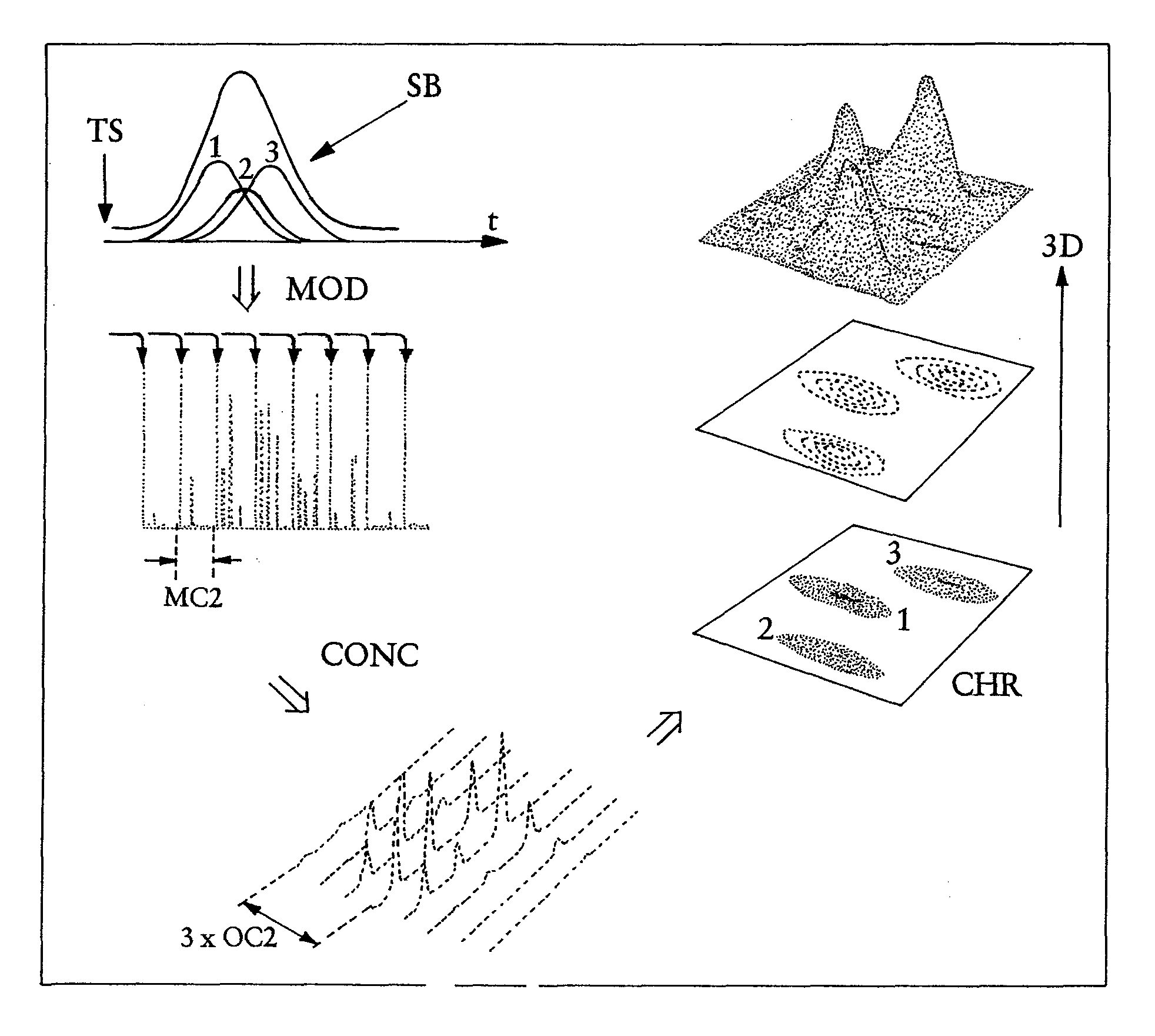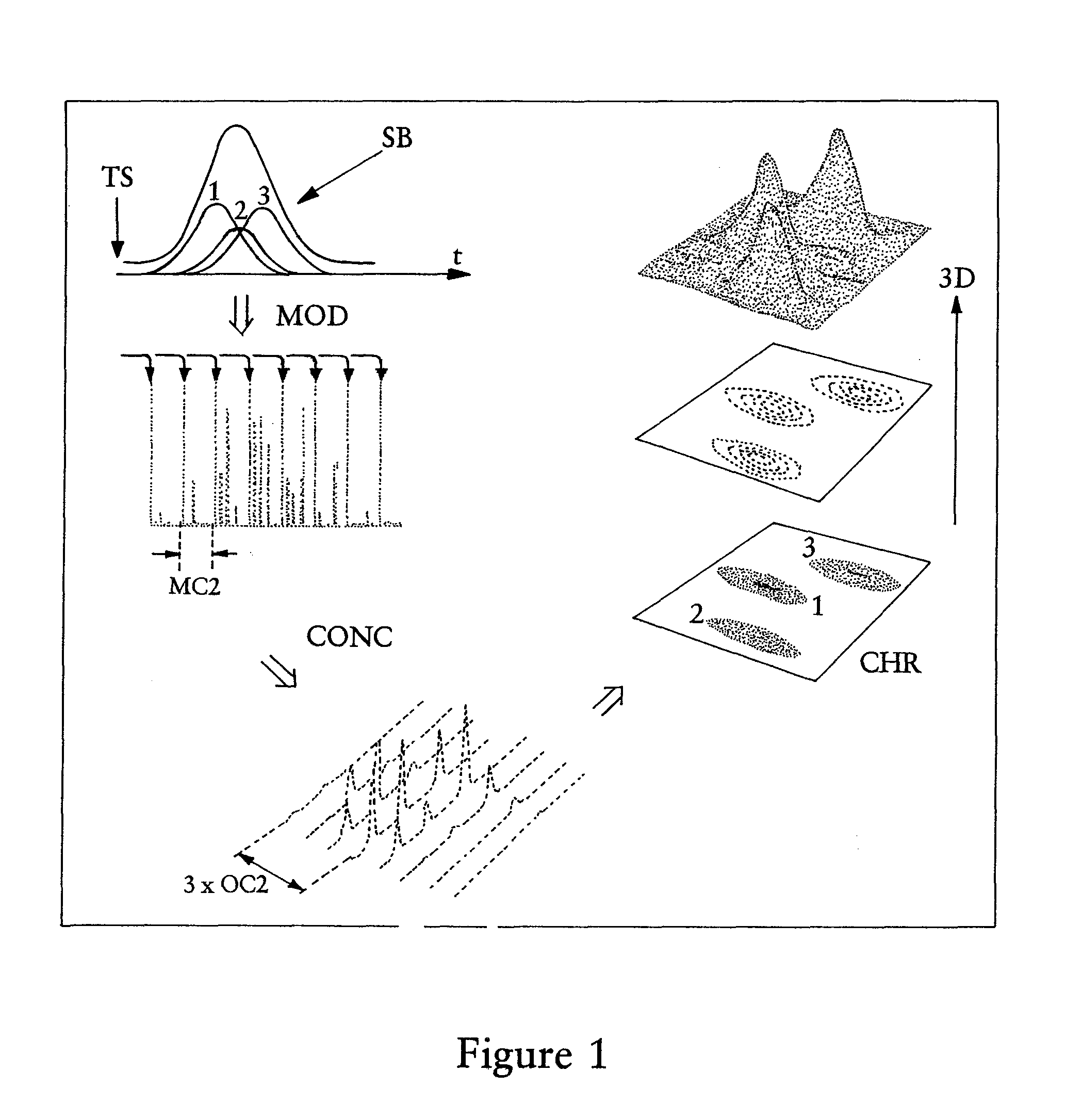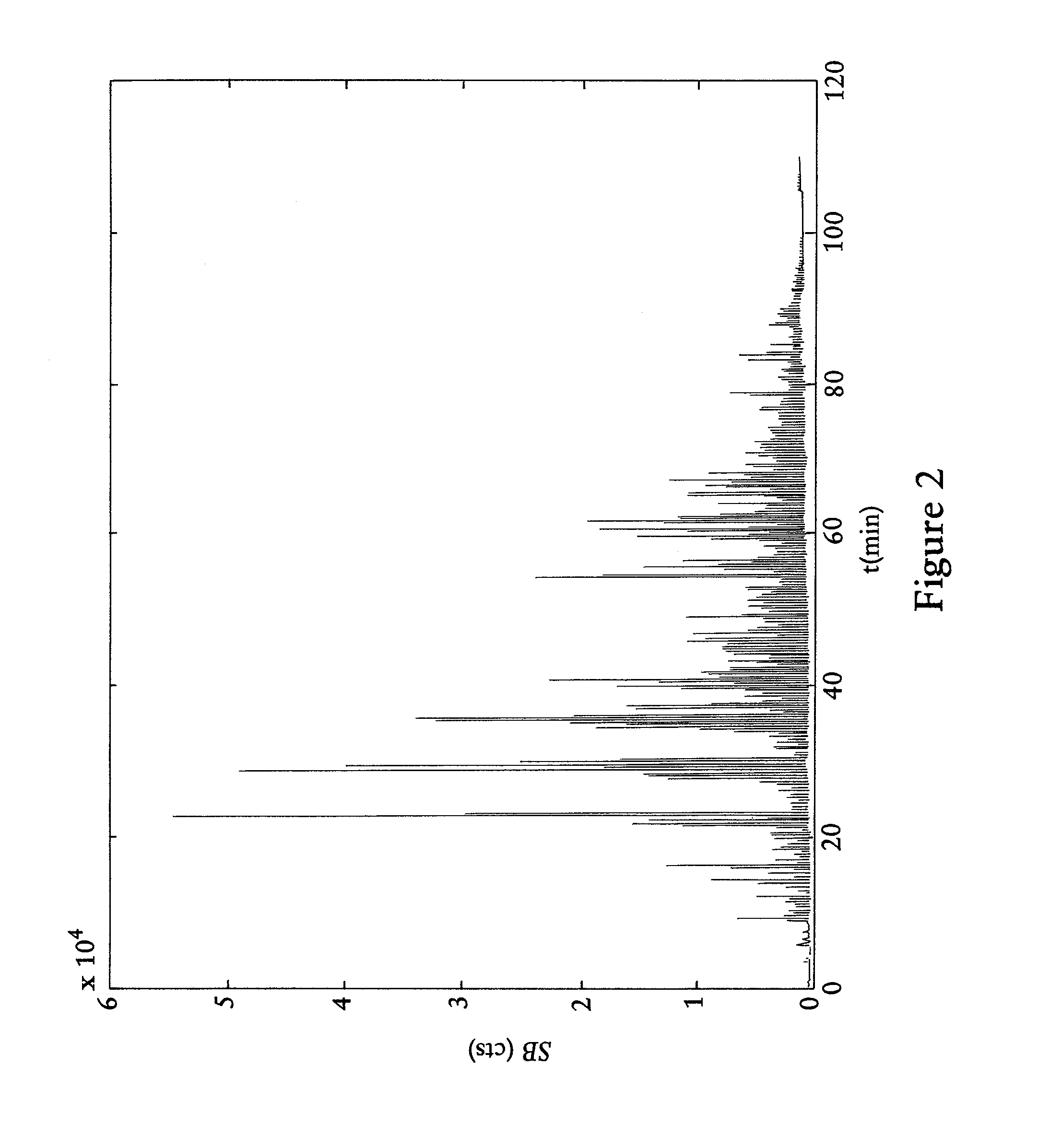Method for carrying out a quantitative analysis of a mixture of molecular compounds by two-dimensional gas chromatography
a technology of gas chromatography and molecular compounds, applied in chemical methods analysis, static indicating devices, instruments, etc., can solve the problems of difficult application of operating methods, difficult to identify each peak individually, and complicated data analysis methods
- Summary
- Abstract
- Description
- Claims
- Application Information
AI Technical Summary
Benefits of technology
Problems solved by technology
Method used
Image
Examples
Embodiment Construction
The method according to the invention allows carrying out quantitative analyses of mixtures of molecular compounds, such as petroleum products, by analyzing chromatograms obtained by two-dimensional gas chromatography.
After carrying out a two-dimensional gas chromatography (2D-GC) on a sample whose molecular composition is to be determined, the method mainly comprises four parts (FIG. 6):
1—Constructing a chromatogram in two dimensions (CHR) from the two-dimensional gas chromatography (2D-GC);
2—Defining the spots of the chromatogram by polygons (POL);
3—Adjusting the polygons to the spots identified in the chromatogram (ADJ); and
4—Determining the molecular composition of the sample by analyzing the polygons (COMP).
1—Construction of a Chromatogram in Two Dimensions
The image to which the method is applied is a chromatogram in two dimensions. Such a chromatogram is characterized by the following elements:
the modulation period (MC2): time required for sampling the effluent of the first co...
PUM
| Property | Measurement | Unit |
|---|---|---|
| surface area | aaaaa | aaaaa |
| end time | aaaaa | aaaaa |
| gas chromatography | aaaaa | aaaaa |
Abstract
Description
Claims
Application Information
 Login to View More
Login to View More - R&D
- Intellectual Property
- Life Sciences
- Materials
- Tech Scout
- Unparalleled Data Quality
- Higher Quality Content
- 60% Fewer Hallucinations
Browse by: Latest US Patents, China's latest patents, Technical Efficacy Thesaurus, Application Domain, Technology Topic, Popular Technical Reports.
© 2025 PatSnap. All rights reserved.Legal|Privacy policy|Modern Slavery Act Transparency Statement|Sitemap|About US| Contact US: help@patsnap.com



